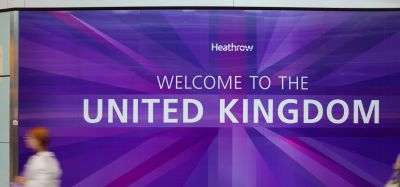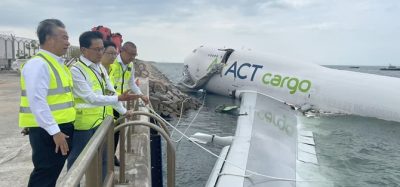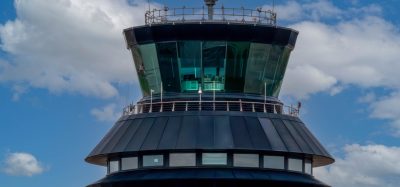Prevention of Runway Incursions at Joint Use Aerodromes
Posted: 16 July 2009 | Goran Redzepovic, Eurocontrol Military Expert | No comments yet
Runway Safety is a vital component of aviation safety as a whole. The predicted growth in air traffic implies that the actual numbers of incidents may rise, unless held in check by preventive actions such as those recommended in the European Action Plan for the Prevention of Runway Incursions (EAPPRI). Over recent years, there have been a number of runway incursions in the European region, which resulted in three actual collisions, with a significant loss of life. The actual EAPPRI was approved by EUROCONTROL’s Provisional Council in April 2003.
Runway Safety is a vital component of aviation safety as a whole. The predicted growth in air traffic implies that the actual numbers of incidents may rise, unless held in check by preventive actions such as those recommended in the European Action Plan for the Prevention of Runway Incursions (EAPPRI). Over recent years, there have been a number of runway incursions in the European region, which resulted in three actual collisions, with a significant loss of life. The actual EAPPRI was approved by EUROCONTROL’s Provisional Council in April 2003.
Airports are key nodes of the aviation network, and airport capacity is a main challenge to future air traffic growth1. The number of slot-controlled airports has grown constantly over the last 10 years. Airport capacity is indeed becoming the limiting factor in overall system performance.
Central to the EAPPRI recommendations is the uniform and consistent application of ICAO provisions. The recommendations are generic, and it is for the national organisation responsible to decide upon specific implementation where joint-use aerodrome operations take place. The current EAPPRI recommendations are applicable where military aircraft operate as general air traffic.
Operations at joint-use aerodromes have some characteristics that differ from purely civil operations. With the support of military stakeholders, EUROCONTROL has identified some specific factors that may contribute to runway incursions at joint-use aerodromes.
Recommendations to prevent runway incursions at joint-use civil military aerodromes that complement the existing European Action Plan for the Prevention of Runway Incursions have been developed.
The principle question explored here is whether civil and military pilots, air traffic controllers and ground personnel can operate together in a safe way at a joint use aerodrome? Are joint use aerodromes immune from runway incursions?
Joint Use Aerodromes
A joint-use aerodrome is either a civil aerodrome used regularly by military traffic or a military aerodrome used regularly by civil traffic. The aerodrome (ICAO term) and the airfield (military term) should be considered as synonyms. The regulation of OAT is the sole responsibility of the state authority, consequently the procedures related to joint civil and military aerodrome operations fall under the state’s responsibility.
Actual use differs from nation to nation and the regulatory position varies from state to state.
Use of aerodromes by both civil and military airspace users is a common European practice. Airlines, general aviation and low-cost aircraft operators use military aerodromes on a regular basis.
Opening military aerodromes for civil users has key benefits for both civil and military communities, these are:
- increasing airport capacity to the ATM network;
- cost-sharing of aerodrome operations, with civil users providing partial release of the pressure on military and civilian budgets;
- developing a sector of the local economy;
- supporting overseas operations and as a part of multinational operations, military use civil aerodrome facilities either as short term refuelling stops or as temporary bases.
Different types of operations
While civil aerodrome operations comply with ICAO provisions, military personnel and equipment follow national rules and regulations. Even though some of the military requirements conform with ICAO under NATO standardisation or national policy, it does not mean that they are all compliant with every provision of ICAO.
In addition, general air traffic (GAT) encompasses all flights conducted in accordance with the rules and procedures of ICAO, including military flights, while operational air traffic (OAT) encompasses all flights which do not comply with the provisions stated for GAT and for which rules and procedures have been specified by appropriate national authorities. In relation to civil traffic, OAT flights are as compliant as possible and as different as necessary.
Join civil military operations and runway safety
State reports to EUROCONTROL on runway incursions confirm the involvement of military aircraft in runway incursions within the European region. The percentage of military aircraft involved in runway incursions is almost the same as the percentage they make up of European air traffic – that is, around 2.5%.
In other areas of the world, such as the USA , Australia and Canada, reports confirm that military pilots, air traffic controllers, vehicle drivers and other military personnel working in the vicinity of runways are involved in runway incursions.
CHARACTERISTICS OF THE OPERATIONS AT JOINT-USE AERODROMES
One aerodrome two authorities
From the regulatory and supervisory perspective, one aerodrome, two authorities is a common situation at joint use aerodromes. The application of different types of rules and procedures could create confusion during aerodrome operations.
For instance, during surface movement, a formation of aircraft is considered as a single aircraft in terms of right-of-way. When an individual aircraft and a formation are on a converging course, the individual aircraft is not allowed to cross/break a formation. Special attention must be paid to the prevention of possible conflicts of regulations/procedures. Cooperation agreements between civil and military regulatory authorities, and aerodrome operators is one of the possible solutions. In any case, a safety assessment addressing mixed types of aerodrome operations is recommended, to reveal where special procedures are needed to maintain the required level of safety. Differences in the application of GAT and OAT procedures liable to affect the safety of aerodrome operations should be published accordingly.
ATS provision
Air traffic services at joint use aerodromes could be either a civil or a military responsibility. Sometimes both civil and military ATC operate at the same aerodrome in parallel. One consequence is that two auditing authorities perform independent audits at the same aerodrome, when a coordinated inspection/audit could be provided. Civil and military inspection/audit activities and subsequent safety recommendations should be coordinated among civil and military authorities.
Aerodrome operator
There are some joint-use aerodromes where more then one aerodrome operator is responsible for a specific segment of the aerodrome movement area2.
In the case of more than one aerodrome operator, the leading operator should secure the harmonised, consistent and coordinated application of the recommendations for the prevention of runway incursions, while preventing duplication or overlapping of responsibilities and effort.
Different type of aircrafts
Joint-use aerodromes harbour, on a regular or temporary basis, different types of fixed-wing and rotary-wing aircraft with different operational performances. Owing to the variety of approach speeds, and different circuit patterns, civil pilots may not be familiar with the operational hazards they may represent. For example, military ATC does not take responsibility for separating aircraft in the visual circuit, except for GAT IFR flights cleared for visual approach procedure (ICAO Doc. 4444, Part IV). All aircraft are expected to fit in with the other traffic, and, if that is not possible, to go around. Maintaining the visual separation can be a complex operation for civil pilots unfamiliar with local visual circuit patterns.
IFR approach/departure procedures may be considered a more convenient solution for civil pilots unfamiliar with local visual circuit patterns during simultaneous civil and military aerodrome operations.
Communications
Even though the majority of military aircraft are VHF/UHF radio equipped, military aircraft very often operate using UHF. Unlike the military, civil aircraft use VHF radio only. Simultaneous aerodrome operations using different frequencies may lead to communication breakdowns and reduced situational awareness. The ideal situation is that both civil and military aircraft use VHF frequency during simultaneous civil and military aerodrome operations. One common mitigation technique is to cross-couple UHF/VHF frequencies.
Ground controlled approach (GCA) is the primary means for precision approaches. Communications associated with the conduct of GCA operations require the use of a frequency which is separate from the TWR/GND frequency. Real-time coordination and enhanced situational awareness between GCA and TWR/GND controllers should be in place during GCA operations. In addition, GCA operational procedures should be published in AIPs.
Military pilots and controllers may use non-standard ICAO phraseology and the local language. Although in certain circumstances the use of local language is allowed, this factor contributes towards communication breakdown, a causal factor which is present in many runway incursions. Consequently it is recommended to use Aviation English and standard ICAO phraseology during civil operations at joint-use aerodromes.
Pilots may not be able to positively identify all civilian or military aircraft types. It is too ambitious to expect that civil pilots will identify different types of fighter aircraft correctly. The use of ATC instructions which include aircraft type such as follow F 1 as the identification feature should be avoided.
In general, conditional clearances related to the runway operation should not be used for civil traffic during military formation flight operations.
Visual aids
Aerodrome charts, signs, marking and lighting are all aids to navigation on the ground. A few markings around military aerodromes may be different from the ICAO standards. Those which are visible to civil pilots/drivers could lead to pilot or vehicle driver error. Standard ICAO Annex 14 aerodrome markings should be used where civil and military aircraft share a manoeuvring area. Any deviation should be published in accordance with ICAO Annex 15, Aeronautical Information Services.
Military pilots may need to reduce or switch off some of the aircraft’s lights for either operational or tactical reasons. Procedures referring to the use of anti-collision, navigation, landing, taxi and other on-board lights on military aircraft may deviate from ICAO Annex 2 and recommended best practices for civil aircraft.
Wherever possible, military aircraft should use on-board lights in accordance with ICAO Annex 2 and recommended best practices. If this is not practical, additional procedures should be applied to maintain the required level of situational awareness at joint-use aerodromes.
The technical characteristics and operational procedures for ground lighting at joint-use aerodromes may deviate from ICAO Annex 14. The application of different light-operating procedures may reduce situational awareness on or around the runway. During civil operations at joint-use aerodromes, runway and taxiway lighting should comply with ICAO Annex 14.
Ad hoc allocation of military units to civil aerodromes
The military, very often as part of multinational operations, use civil aerodrome facilities as short term refuelling stop aerodromes or as temporary bases for assisting various types of peace support or humanitarian operations.
Military pilots and ground personnel, coming from all around the world, may not be familiar with ICAO flight rules, phraseology, aerodrome signs, lights and markings.
The relevant military aviation authority should ensure that military pilots and airside drivers, who are temporarily deployed at civil aerodromes, are competent to operate in accordance with ICAO provisions and local procedures liable to affect operations in manoeuvering areas, through regular local familiarisation training.
Ad hoc deployment of a military unit at a civil aerodrome should be covered by an appropriate hosting agreement. Proper coordination channels regarding runway safety should be established. The best way is to include military representatives in the local runway safety team.
Conclusion
Joint-use aerodromes, with military and civil operations, are common practice within the European area. Owing to specific military operational needs, aerodrome operations may deviate from ICAO provisions. In such cases, a difference should be filed.
The recommendations proposed in the EAPPRI may also be helpful in order to maintain safety levels at joint-use aerodromes, as traffic levels, types of flight and types of operations change. However, the operations at joint-use aerodromes may have some characteristics that differ from purely civil operations. In addition to the earlier published factors causing and contributing to runway incursions, there are specific factors relating to operations at joint-use aerodromes.
EUROCONTROL has identified specific factors that can contribute to runway incursions at joint-use aerodromes by collecting experiences and best practices from joint-use aerodromes
The set of recommendations for the prevention of runway incursions at joint-use aerodromes complements the “civil” recommendations, which could be included in the second edition of the EAPPRI.
From a runway safety perspective, there is no single indication that joint use aerodromes are more vulnerable to runway incursions than “pure” civil ones. However, in addition to the standard set of EAPPRI recommendations, the implementation of the recommendations developed for joint use aerodromes could enhance the safety of aerodrome operations where civil and military airspace users, aerodrome operators and ANSPs work together.
Implementation of the recommendations at joint-use aerodromes is voluntary. Establishment of a civil-military Local Runway Safety Team is the right way to address local runway safety issues.
References
- Challenges of Growth 2008, EUROCONTROL
- That part of an aerodrome intended for the surface movement of aircraft, including the manoeuvring area and aprons.
Stay Connected with International Airport Review — Subscribe for Free!
Get exclusive access to the latest airport and aviation industry insights from International Airport Review — tailored to your interests.
✅ Expert-Led Webinars – Gain insights from global aviation leaders
✅ Weekly News & Reports – Airport innovation, thought leadership, and industry trends
✅ Exclusive Industry Insights – Discover cutting-edge technologies shaping the future of air travel
✅ International Airport Summit – Join our flagship event to network with industry leaders and explore the latest advancements
Choose the updates that matter most to you.
Sign up now to stay informed, inspired, and connected — all for free!
Thank you for being part of our aviation community. Let’s keep shaping the future of airports together!

















